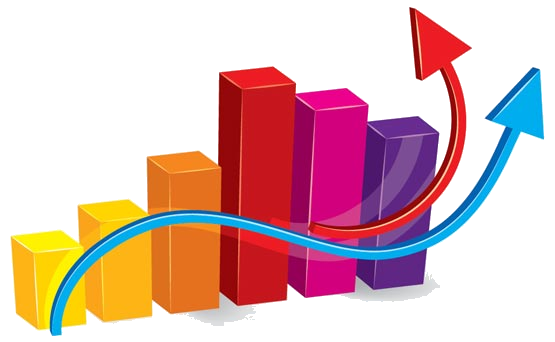Theory and Practice in Policy Analysis
Conceptual Readings:
- Theory and Practice in Policy Analysis, Chapter 1 – Most people have not spent much
time thinking about the approach or perspective we ought to use when making important
decisions. A major goal of this class is to teach the perspective and tools of a “policy
analyst”. This first chapter serves as a bit of an introduction to some of the ideas of how
that ought to work, which is actually still being debated. This chapter basically asks: what is
the point of policy analysis? I would suggest that it is actually a more complicated question
than it seems and there are different reasonable answers. I’m looking forward to hearing
your thoughts.
Questions to think about: What do you think of the different “models” of the ways that
analysis contributes to the policy process? Any of them seem better/worse than others in
your experience? If we are doing policy-relevant research/analysis, what should our goals
be? Is policy analysis really different from science? Do you agree with the author
throughout or do you take issue with his perspective anywhere? - Theory and Practice in Policy Analysis, Chapter 3 – Around the world, benefit-cost
analysis is the primary decision-making criteria of governments and corporations. Doing a
benefit-cost analysis is pretty conceptually simple (you may already have experience with
BCA). But there are a lot of important assumptions that go into BCA, most of which are
never even considered by those who actually carry it out. This chapter (and the next
reading) basically dig into the ethics of BCA, including ways that it might be unfair. We
already use this tool all the time to make important decisions, and these readings dig into
what BCA can and can’t tell us.
Questions to think about: What is the issue with using prices to estimate benefits and
what is the correct way of framing them? Should the value of (all) things be based on the
number of people that use them? What are some issues with “willingness-to-pay” as a
stand-in for economic value? What is the Pareto criterion and why is it almost impossible to
meet? What is the Kaldor-Hicks criterion and what are some ethical issues with it? What
are some of the practical/political issues with the way that BCA is applied? What do you
think about the Precautionary Principle as an alternative to BCA? In the end, is BCA a useful
tool? - Lave “Benefit-Cost Analysis: Do the Benefits Exceed the Costs?” –BCA is an extremely
common tool that has generally been adopted as the primary decision criteria in most policy
analysis circles. Lave here is pushing back against the dominance of that culture,
attempting to illustrate that BCA is not a perfect tool and attempting to specifically point out
ways that it doesn’t reflect our values. What is Lester Lave’s real argument here? Is it an
argument against benefit-cost analysis (BCA) or something more subtle? What is
utilitarianism and how does this essay relate to it? What are the weaknesses of BCA? When
should we use BCA (on what type of problems)? How should we interpret the output of a
BCA? - Theory and Practice in Policy Analysis, Chapter 7 – Financial discounting is a common
tool used in accounting to understand the time-value of money. We come across it any time
we have to pay interest on a loan or make decisions between different types of investments.
Just like some of the other topics in this class, this relatively simple and commonly-used tool
has some hidden assumptions. While standard discounting works pretty well to help us
make investment decisions, it is unclear if we can apply it to other topics like lives or what
kind of a society to leave to our children. Some people argue that standard discounting is
the right approach for almost any problem, but others argue that it leads to all sorts of
outcomes that many people would find unethical.
Questions to think about: In what situations is simple financial discounting appropriate?
Is a “real options” perspective better? In what ways? Are discount rates constant? Should
we use the same discount rate for different decisions, or are there situation-specific rates?
Are things more remote spatially similar to those that are more remote temporally: does a
“spatial discount rate” make sense? In general, what do you think of the applicability of
discounting concepts?
Practical Reading: - Herbohn and Harrison “Introduction to Discounted Cash Flow Analysis and Financial
Functions in Excel” – This reading is a short and simple explanation of how net present
value (discounting) calculation work and how to set them up in excel. This reading is
technically optional, but will be useful for the homework assignment below.
Week 1 Assignment (due 27 February)
Question 1 (40 points), write a high-quality essay, approximately 1 single spaced page:
The four conceptual readings in the first week describe a rational, analytical approach to
evaluating decisions, policies, or other changes, usually in terms of monetary value (there are
different tools and methods discussed, but they all fall under a perspective that is rational,
quantitative, and based on the idea of utility maximization). In this first essay, write a short essay
describing what you see as the strengths and weaknesses of this analytical perspective. This may
include theoretical elements (like how ethical the approach is) or practical elements (like whether
the approach can be applied to real-life questions). Please reference the readings and any outside
sources you want in this essay.
If you aren’t sure what to write about, here are some questions to consider (but are not
required in the essay): Is this analytical perspective better than a purely political process for
making decisions? How can this perspective be brought into government decision making? In your
view, are these types of analysis worth doing? Are they always worth doing, or are there certain
topics where they make the most sense? Are there situations where we don’t want or need these
tools to help us make decisions? In the end, governments and organizations need to make decisions
and take action – how should we make those decisions?
Question 2 (20 points), only need to answer the questions, short sentences are fine:
Consider a risk-free investment that costs $10,000 in year 0 and pays back 3 payments of
$4,000 in years 1,2, and 3.
a. What are the net benefits of the investment in direct (not discounted) terms?
b. What are the discounted net benefits if my discount rate is 5%?
c. What are the discounted net benefits if my discount rate is 25%?
Question 3 (40 points), only need to answer the question, can be tables copied from excel
and a few sentences:
I want you to practice setting up a discounted cash flow and calculating NPV in excel. For this, I
want you to estimate and compare the net present cost of a hybrid car (Toyota Prius C) and a
similar regular car (Toyota Yaris). These are both small cars targeted at the economy buyer, but the
Prius C costs more. However, of course, it saves fuel and might be a better option in the long run.
For this problem, use these values for your base-case analysis (assume all costs are in real dollars
and are constant over time):
Parameter Value
Prius C cost $19,500
Yaris cost $14,800
Gasoline cost $2.50 / gal
Prius C fuel efficiency 49 MPG
Yaris fuel efficiency 33 MPG
Annual mileage 12,000 miles
Lifetime of car 15 years
Discount rate 7%
For this analysis, you can disregard other factors (like maintenance costs or taxes) and just
assume that the only costs are the upfront cost of the car and the fuel cost. For simplicity, assume
you will just pay cash for the car and that you will drive it for 15 years, after which it will have no
salvage value at all. Assume that the car is purchased in “year 0” and that the fuel expenses occur
between “year 1” and “year 15”.
On this question, you can just paste your excel tables in as an answer, with short sentences
where needed (ie, a carefully written report is NOT required).
a. For the Prius C, set up the (not discounted) cash flow for years 0 to 15 in one column. In the
next column, apply discounting to the cost of ownership in each year (0 through 15), showing the
discounted cash flow. Then sum it up to get the net present cost (NPC) of buying and operating the
vehicle for 15 years.
b. Next, do the same thing for the Yaris in the next few columns. Remember, good practice is to
label your columns carefully (it helps you to remember exactly what each thing is).
c. In another cell on your sheet, take the difference between the two NPC values from above.
Which is cheaper and by how much?
d. Now do a little sensitivity analysis. Which is the better choice (and by how much) if a
consumer’s discount rate is 25%? At what gas price do the two options have the same NPC? If you
set up your excel model correctly (with inputs typed in their own section and the main model
referencing those cells), these should be easy to determine.

 Our orders are delivered strictly on time without delay
Our orders are delivered strictly on time without delay  Our orders are delivered strictly on time without delay
Our orders are delivered strictly on time without delay 



